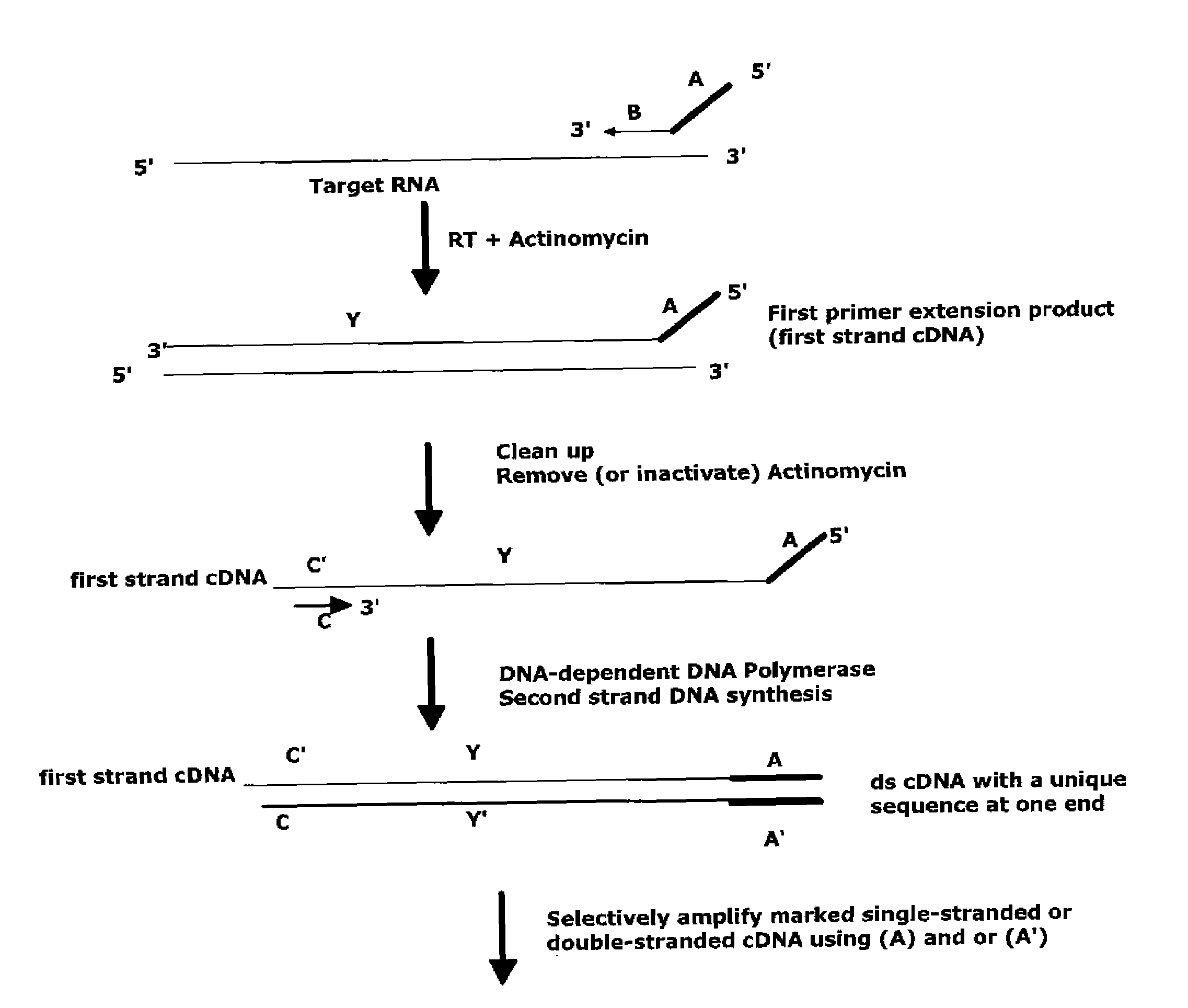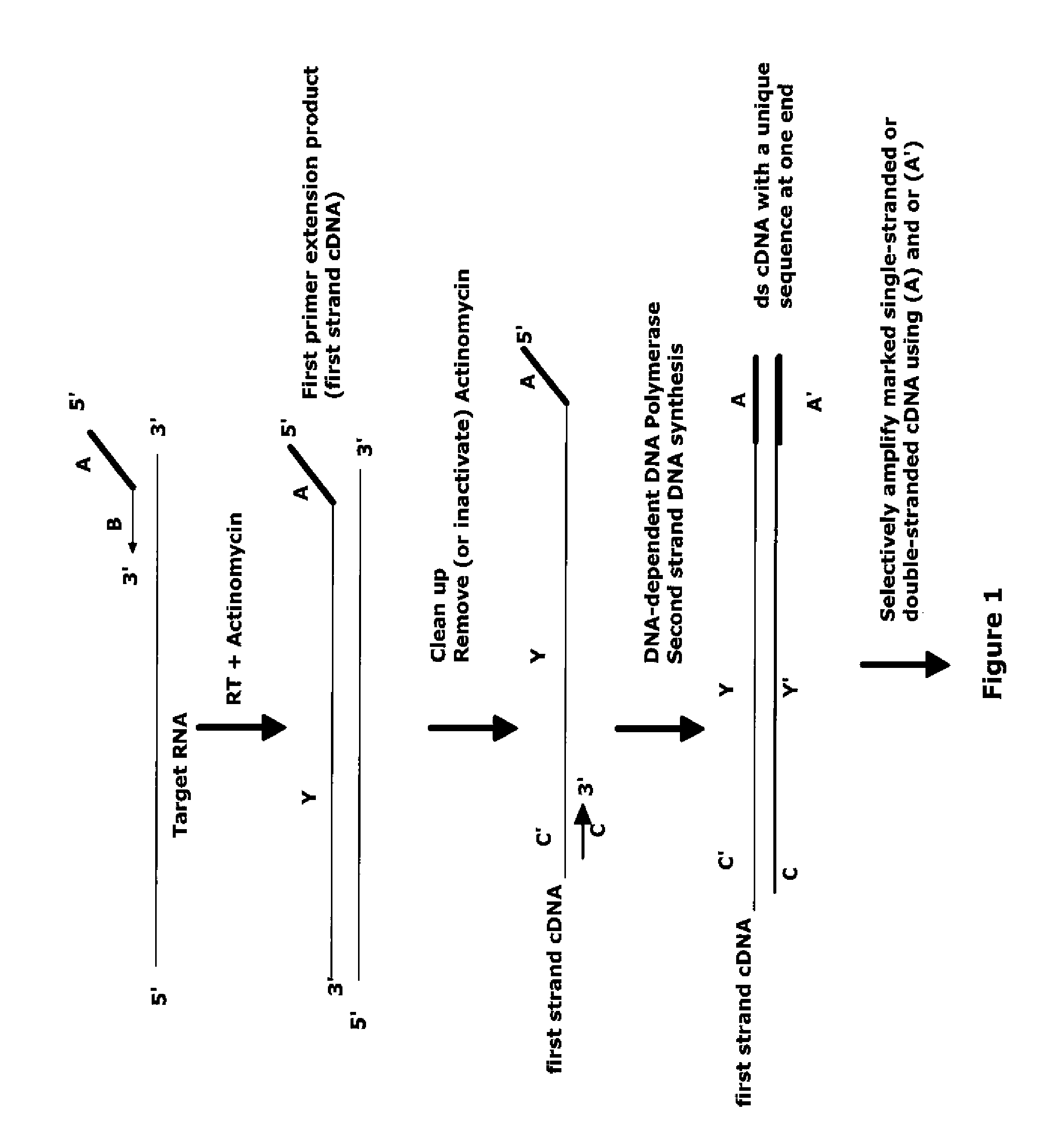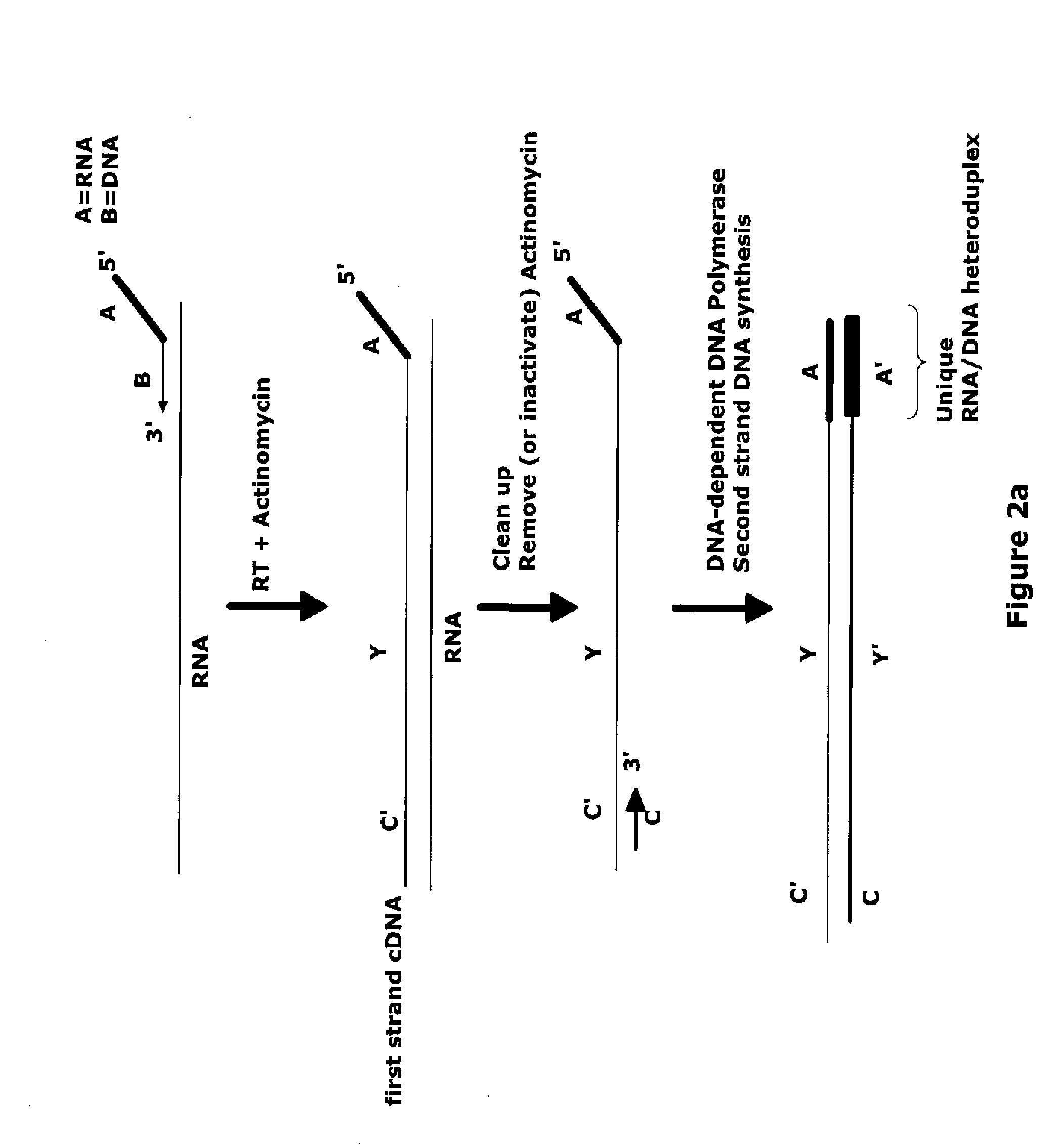Methods of RNA amplification in the presence of DNA
a technology of rna amplification and dna, which is applied in the field of rna amplification in the presence of dna, can solve the problems of limited amount of sample rna that is available, limited amount of biological samples, and high cos
- Summary
- Abstract
- Description
- Claims
- Application Information
AI Technical Summary
Benefits of technology
Problems solved by technology
Method used
Image
Examples
example 1
Amplification of Sequences from a Target RNA in the Presence of DNA Using Actinomycin to Inhibit DNA-Dependent DNA Polymerase Activity
[0206]A RNA target is amplified using a method involving a first primer, comprising composite RNA / DNA portions, wherein the 3′-DNA end of the primers comprises either poly-dT sequence or a random sequence. First strand cDNA synthesis is performed with this first primer in the presence of Actinomycin D, an inhibitor of DNA-dependent DNA polymerase. Removal of Actinomycin D and RNA target from the reaction mixture is performed by binding the nucleic acids to magnetic beads. Second strand cDNA synthesis is then carried out and is followed by amplification, which is performed using a composite amplification primer, DNA polymerase with strand displacement activity, and RNase H. The global RNA amplification was carried out using the WT-Ovation Pico amplification system (NuGEN Technologies Inc. http: / / www.nugeninc.com / html / 03_products5.html) with additional ...
example 2
Whole Transcriptome Analysis of Sequences from Total RNA in the Presence of DNA Using Actinomycin to Inhibit DNA-Dependent DNA Polymerase Activity
[0218]A RNA target is amplified using a method involving a first primer, comprising composite RNA / DNA portions, wherein the 3′-DNA end of the primers comprises either poly-dT sequence or a random sequence. First strand cDNA synthesis is performed with this first primer in the presence of Actinomycin D, an inhibitor of DNA-dependent DNA polymerase. Removal of Actinomycin D and RNA target from the reaction mixture is performed by binding the nucleic acids to magnetic beads. Second strand cDNA synthesis is then carried out and is followed by amplification, which is performed using a composite amplification primer, DNA polymerase with strand displacement activity, and RNase H. The global RNA amplification is carried out using the WT-Ovation Pico amplification system (NuGEN Technologies Inc. http: / / www.nugeninc.com / html / 03_products5.html) with ...
PUM
| Property | Measurement | Unit |
|---|---|---|
| concentration | aaaaa | aaaaa |
| temperature | aaaaa | aaaaa |
| temperature | aaaaa | aaaaa |
Abstract
Description
Claims
Application Information
 Login to View More
Login to View More - R&D
- Intellectual Property
- Life Sciences
- Materials
- Tech Scout
- Unparalleled Data Quality
- Higher Quality Content
- 60% Fewer Hallucinations
Browse by: Latest US Patents, China's latest patents, Technical Efficacy Thesaurus, Application Domain, Technology Topic, Popular Technical Reports.
© 2025 PatSnap. All rights reserved.Legal|Privacy policy|Modern Slavery Act Transparency Statement|Sitemap|About US| Contact US: help@patsnap.com



